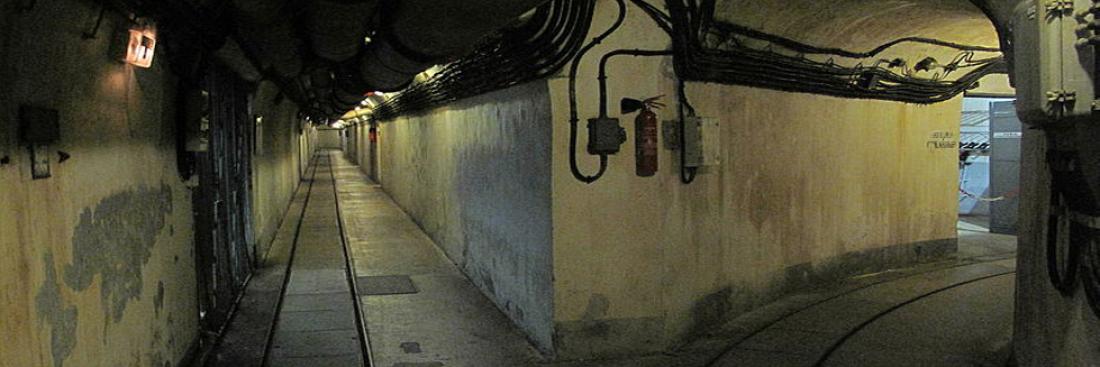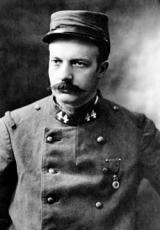La drôle de guerre 39-40

Corps 1
In 1938, when Germany annexed Austria and demanded a part of Czechoslovakia, war seemed to be imminent. The signature of the Munich Accords by Daladier, President of the French Council and by British Prime Minister Chamberlain satisfied German Chancellor Hitler, and bought some time. Concerns mounted once again when German troops entered Prague on the 15th March 1939. The German Führer then set his sights on Poland which, in spite of Chamberlain's attempts at conciliation, had mobilized its forces.
Corps 2
On 1 September 1939, the German army invaded Poland. Bound to the Polish government by an assistance treaty since 1921, Great Britain and France reacted by mobilising their own forces and issuing an ultimatum to Berlin. As this met with no response from Berlin, the two allies declared war on Hitler's 3rd Reich on 3 September; Britain at 11am, France at 5pm. They were followed the same day by Australia and New Zealand and, a few days later by Canada and South Africa. On 5 September, the United States declared their neutrality. Meanwhile, the enemy offensive continued towards Warsaw, routing the bewildered Polish forces through a new form of warfare: "lightning-war" or blitzkrieg waged by the German Generals. The Second World War quickly spread to sea and air: As early as 3rd September, the German submarine U-30 torpedoed a British steamship, Athenia, which sank off the Irish coast. Meanwhile English aircraft attacked the enemy naval base on the island of Heligoland. By that time 80% of the German submarines fleet was already operating; on 17 September, one of them sank the aircraft carrier Courageous and - worse still - the battleship Royal Oak was torpedoed by U-47 which had slipped into the heart of the naval base at Scapa Flow. Elsewhere, the German Navy laid magnetic mines throughout the English Channel. In the South Atlantic, in December, the pocket battleship Admiral Graf Spee, blockaded in Montevideo by a British armada, was scuttled by its crew
As part of the Franco-Polish Treaty of 1921 and the military convention of 1936, General Gamelin launched an operation on the western front to relieve the Polish army in the region of the Saar, led by General Prételat's Second Army Group. Their mission was to advance into the zone ahead of the Siegfried Line. This was primarily a kind of rectification of the front to cut off the Warndt and the River Bliess salients. During the night of 5 September 1939, the units set off, cautiously advancing into the section evacuated by the enemy. But this proved to be a trap and many men were lost to mines. The forest of Warndt was captured by the 42nd infantry division, while the 4th army occupied the villages of Carlsbrunn and Saint-Nicalas, with the 3rd army taking Biringen. A number of infantry engagements took place on 9 September. The French crossed the Saar at Welferding and advanced along the Auersmacher plateau. Progress was slow. R 35 tanks of the 20th Combat Tank Battalion advanced to the north of Bliesbrück, four of them being destroyed by mines. The next day the Germans counter-attacked, seizing the village of Apach, which the French recaptured in the evening. The 32nd Infantry Regiment took the German town of Brenschelbach, for the loss of a captain, a sergeant and seven infantrymen. During the evening of 12th September the French seized the German villages of Gersheim, Medelsheim, Ihn, Niedergailbach, Bliesmengen, Ludweiler, Brenschelbach, Lauterbach, Niedaltdorf, Kleinblittersdorf, Auersmacher and Hitlersdorf. The last of these, now called Sitterwald, was captured on 9 September by the 26th Infantry Regiment On 12 September, General Gamelin halted the advance after taking an area of territory 25 km in length and 5 - 8 km wide; the Siegfried Line was not attacked. At Abbeville, on the Somme, the first meeting of the Allied Supreme War Council was held. During this meeting Gamelin's decision to stop attacking to the West was approved. On 4 of October, General Georges, Commander of the 1st and 2nd North and North-East army groups, pulled his units back behind the Maginot Line. The operation in the Saar cost the French army around 2,000 soldiers, killed, wounded or sick. General Gort's British Expeditionary Force landed at Nantes and Saint-Nazaire and took position between the 7th and 1st French armies with its GHQ at Le Mans; the 51st Scottish Infantry Division took up position in the east, behind the Maginot Line.
On October 19th, an assistance treaty was signed between the allies and Turkey. On the 29th, Belgium declares its neutrality. As a result, the enemy enjoyed eight months in which to prepare his offensive. The allied soldiers grew bored; the French army continued its organization on the ground and reinforced its waiting positions. Thanks to their volunteer corps, the units carried out many patrols to obtain information and take prisoners. The two sides observed one another constantly; in Lorraine and Alsace, from Sierck to Lauterbourg and as far as Huningue, binoculars, rangefinders and periscopes scanned the landscape. A bitter winter added freezing weather conditions to the uneasy calm of this period that became known as the "Phoney War". As the weeks went by, the German army began to implement its plan of concentrating the units to lead the offensive that would include the invasion of Holland, Belgium, Luxembourg and France. The crucial objective, or "Schwerpunkt", was Sedan, which had to be reached by crossing the Belgian Ardennes, in order to strike the French defences, creating and exploiting a breakthrough.
From the 3rd of September, in the sky, all the french shooters based on their new aerodromes in the countryside start their mission on the boundaries of the Moselle region, articulated in two or three staged patrols of 6 to 9 planes. They have eight squadrons ; in other words they have 18 groups of two flights, each of them equipped of Curtiss H 75A, Morane MS 406, Dewoitine 510 and Potez 631 aircraft and using Etampes, Chartres, Dijon, Reims and Marignane as rear bases. For bombing, reconnaissance and observation missions, the Air Force had aircraft such as the Bloch 131, Amiot 143, Mureaux 115 and Potez 390. On 8th September the air force suffered its first losses: Sergeant-Pilot Piaccentini and Lieutenant Davier were shot down in their Mureaux 115 over Rohrbach in Germany. The heaviest air engagement occurred on 6th November, between 9 Curtiss H 75As of II/5 Group, escorting a Potez and a formation of 27 Messerschmitt ME-109 fighters. Ten Germans were killed for no French losses. Meanwhile, on 18th of December, 22 British Wellington bombers faced 24 Messerschmitts over the North Sea. This level of aerial activity would continue for weeks, until bad weather reduced operations during the winter. The Soviet Union's attack on Finland in November 1939 encouraged the first plans for an allied landing. This led to an expeditionary force being drawn up - on paper - in France. The project was still in progress when, on 9th April 1940, Hitler launched an attack on Scandinavia. In a single day, through a series of naval and aerial operations, the Germans took the main Norwegian ports, despite counter-attacks by British warships.
The first Franco-British response targeted Trondheim. The direct sea offensive against Andalnes and Namsos was supported by action on the ground. It was in the latter sector that the 5th Half-Brigade of Alpine Chasseurs landed on 19th April. Enemy aircraft counter-attacked, setting fire to towns and villages and bombarding the allied units. Freezing temperatures and snow added to the difficulties. The British commanders decided to retreat by sea and the Alpine Chasseurs withdrew from Namsos on 3rd May. Efforts were then concentrated on Narvik where the 27th Alpine Half-Brigade and the 13th Half-Brigade of the Foreign Legion, commanded by General Béthouart, join the British battalions. The legionnaires took Bjervik. British, Norwegians and Poles fought side by side, while the enemy clung on to the plateau overlooking Narvik. However, on 30th of May, after bitter fighting, the allies managed to push the Germans back 14km from the town. But the events which occurred on the western front meant that this victorious operation would stop there to be replaced by an immediate general evacuation. On 8th June, the last allied ship left Norway.
Today in Narvik there is a French military cemetery as well as a monument to the memory of Captain Bouan and the 200 seamen killed when the destroyer Bison was sunk on 3rd May 1940.


